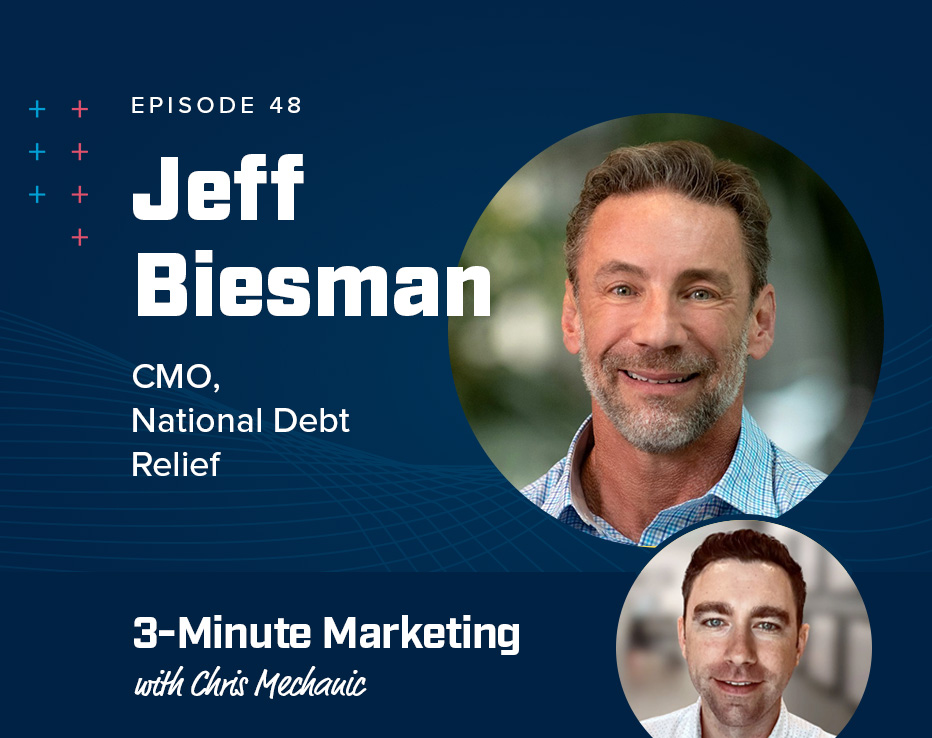
E-A-T & SEO: Protect against algorithm updates and solidify your brand
Quality over quantity.
Quality content is king.
Google ranks quality content.
You’ve heard it all before, right? But what is quality?
This article will break down the concept of E-A-T that you can use to determine if your content is being perceived as high quality, and take action if it comes up short.
My hope is that introducing you to E-A-T will help to demystify the sometimes squishy realm of SEO and give you concrete guidelines to improve your content based on Google Search quality guidelines.
Ready? Let’s dig in.
The E-A-T process
What is E-A-T? E-A-T stands for expertise, authority, and trust. E-A-T It comes from the Human Rater Handbook, a 164-page document from Google that gives human Google quality raters a guide to assessing whether a website should show up in Google’s top rankings.
Everyone knows that Google uses a sophisticated algorithm to rank content, but not everyone knows about these human raters who are literally manually looking at pages to evaluate them on these criteria. Since we can assume that the human raters are given guidelines to help them make decisions that are similar to the algorithm’s, anyone doing SEO should know this document inside and out. This is truly a look behind the curtain to see what Google values in a site’s content.
Use E-A-T as a measuring stick for your content so you can improve it and capture the coveted top spots on Google.
There are a bunch of ways these factors are evaluated, with overlap:
Expertise. Do you have enough knowledge to be writing about this topic? If you have an MD writing about medical subjects, that’s great and you should include an author bio that demonstrates his or her expertise. Formal expertise is important for topics such as medical, financial, or legal advice.
Authority. This factor has more to do with the site itself. It isn’t just about who is writing the content—it’s also about how much content your site has on a given topic and how often it is linked to by other authorities. Authority relates to the idea of latent semantic indexing, which is a fancy way of saying that if you publish a variety of content on a topic, you’ll be building evidence of expertise. For example, a journalist writing for the New York Times website has a higher chance of ranking for the article than if he were to publish the same article on his own blog because he is leveraging the established authority of the New York Times.
Trust. This refers to your reputation based on the sentiment of external experts. Approval from external, credible sources is hard to obtain or manipulate, which makes it a great signal of trust. Other reputable sites may be linking to you, but if they’re expressing negative sentiment about your service, product, or brand, Google will dock you points for that, and rightfully so. Check out these quotes from the handbook for details:
“When the website says one thing about itself, but reputable external sources disagree with what the website says, trust the external sources.“
“When a high level of authoritativeness or expertise is needed, the reputation of a website should be judged on what expert opinions have to say. Recommendations from expert sources, such as professional societies, are strong evidence of very positive reputation.”
“News articles, Wikipedia articles, blog posts, magazine articles, forum discussions, and ratings from independent organizations can all be sources of reputation information.”
User reviews are another form of trust. The more you have and the more the content of the reviews is convincing, the better off your trust will be.
Everywhere your brand or solution is talked about on the web is a potential area that Google assesses for trust. Don’t forget to pay attention to discussions in forums, industry-specific review directories, personal blogs, Wikipedia pages, and Quora.
Your money or your life (YMYL) industries
Sites dealing with higher-stakes topics such as finance or personal health are naturally held to a higher standard of E-A-T than other sites. Any information about loans, credit cards, personal finance, medical symptoms, medical devices, or medicine in general could harm a user if the content is malicious, misleading, or downright wrong. Imagine a site claiming that the usual dose of aspirin is 10 times what is actually recommended—you’d likely have people overdosing, and you don’t need me to tell you that that would be terrible.
The Google handbook says:
“For YMYL pages and other pages that require a high level of user trust, an unsatisfying amount of any of the following is a reason to give a page a Low quality rating: customer service information, contact information, information about who is responsible for the website or information about who created the content.”
Because YMYL sites are held to a much higher standard, it is especially important for them to pay attention to their reputation online. The handbook says that “[f]or a YMYL website, a mixed reputation is cause for a low rating.” With that in mind, be sure to keep an eagle eye on your ratings on top review sites and incorporate the ideas below on building trust so you can avoid a ‘mixed’ reputation.
How to improve expertise
You can improve the expertise score of your page by increasing the caliber of the experts who create content for your site. Sometimes, it’s difficult to find someone on your team who has the ideal credentials, experience, or reputation. In that case, you can incentivize experts from external organizations to write guest articles in exchange for exposure or some other form of value.
Another way to improve perceived expertise is to create in-depth pieces of content that deliver massive value to the user. This is straightforward if you are using keyword research to drive your content strategy: simply grab the relevant topics from popular search terms and make sure to address those areas with comprehensive content. Generally, longer is better, so shoot for content that is at least 2,000 words.
How to improve authority
Build backlinks and references from relevant and authoritative sources, such as professional organizations. The sheer volume of links is less important than links from high-quality sources.
Additionally, be sure to publish as much high-quality content as you can around the topics that you have the most expertise in.
How to improve trust
First of all, don’t try to game this one—only by truly delighting customers can you gain trust. And one of the best ways to consistently do that is by monitoring your online reputation and addressing the concerns that people express.
There’s a feeling in the industry that only disgruntled customers take to the internet to leave reviews, and there may be some truth to that. Therefore, there is no shame in encouraging happy customers to leave online reviews on authoritative sites like Google, Facebook, and Yelp, as well as industry-specific sites, like healthgrades.com for doctor reviews. Basically, you want to incentivize good user reviews so that your company is seen in a good light.
In its document, Google also mentions that you should make it easy for users to get in touch with your company. To that end, display your contact information in a visible and accessible manner, and make it easy for users to get customer support if they run into a problem. You should make it obvious who (what individual, company, business, foundation, etc.) is responsible for the website and who created the content on the page that the user is viewing.
“Contact information and customer service information are extremely important for websites that handle money, such as stores, banks, credit card companies, etc. Users need a way to ask questions or get help when a problem occurs.”
“For shopping websites, we’ll ask you to do some special checks. Look for contact information—including the store’s policies on payment, exchanges, and returns.”
You should also be transparent about advertising, sponsored content, and affiliate relationships.
High-quality content examples
Below are some examples from the handbook of hypothetical content that would score well. No images came with these descriptions, so you’re not missing anything visual here.
“This is a well-known, reputable merchant, with detailed Customer Service information on the site.”
“This is a blog post on a newspaper that has won over 100 Pulitzer Prize awards. The author of this blog post has become known as an expert on parenting issues. She is a regular contributor to this and other media websites.”
“This is an ‘about us’ page on a restaurant website. This page provides information on when the restaurant opened and what visitors can expect. Other pages on the website provide information about the restaurant including the address, menu, other contact information, etc. This website is highly authoritative because it is about itself.”
As you can see from the second review, although having won 100 Pulitzers is a big authority factor for a news site, the local restaurant was judged by completely different standards. The purpose of these guidelines is not to make it difficult for small fish to succeed but to ensure that trustworthy, accurate content from the most relevant sources gets in front of Google’s users and gives them a great experience.
Low-quality content examples
On the other hand, here is what low-quality content looks like under E-A-T:
Expertise
There’s no evidence of expertise in a field. The creator of the content doesn’t have adequate expertise in the topic, such as a tax form instruction video made by someone with no clear expertise in tax preparation.
Authority
The website isn’t an authoritative source for the topic of the page, such as tax advice on a cooking website.
Trust
There’s a lack of security or trustworthiness, like a shopping checkout page that has an insecure connection.
The site has a poor reputation.
Unsatisfying content
In addition to E-A-T, there are other factors that send a red flag for low-quality content that does not satisfy the user. Look out for:
- Shallow content.
- Factual inaccuracies.
- Grammar and punctuation errors.
- YMYL articles that fail to cite sources.
- Shocking, distracting ads, including interstitial pages, especially if they’re indistinguishable from main content.
If your site runs ads, you need to make sure that the ads are clearly distinguished from the main content and not distracting for the user. Sidebar ads or a small number of clearly distinguished body copy ads are OK. You want to steer clear of ads that take up a lot of ‘above-the-fold’ space that forces the user to scroll down to see the content they were really looking for.
How to rewrite content to emphasize expertise
What’s the best way to begin rewriting low-quality content you’ve identified? Here are some tips:
- Add information about the author and their credibility in a clear, visible location, such as below the article title or in a sidebar.
- Even if you can’t have an absolute expert write all of the content from scratch, at least have an expert review and approve the content as a co-author.
- Write high-quality pieces that are informed, informative, and long enough to provide all of the information necessary to satisfy a user’s obvious desires.
- Back up any factual claims you make with cited sources. Provide evidence.
- Make sure your content is well written and edited for clarity, spelling, and grammar.
The dangers of aggressive metadata (and how to fix it)
There’s a variety of interpretations of “aggressive metadata.” Google’s guidelines call out stuff that we can all agree is silly: “If pages do not live up to the exaggerated or shocking title or images, the experience leaves users feeling surprised and confused. Here is an example of a page with an exaggerated and shocking title: ‘Is the World about to End? Mysterious Sightings of 25 ft Sea Serpents Prompt Panic!’”
There is a gray area where sites can benefit from backing off aggressive claims even if they’re factual, such as having “Get a $10,000 loan today” in the page title. The issue is the perception that the site is pushing a service on the user that may not be in their best interest. If you’re in an industry that has a reputation for having a lot of shady players in it, steer clear of this kind of aggressive language in your metadata and opt for something gentler and friendlier.
Merge duplicate or outdated content
When you publish a ton of content on specific topics that are relevant to your users, those pieces are usually bite size. This makes the content perfect for longer-tail, low-volume queries.
However, if you want to compete for those high-volume keywords, you should consider rolling a bunch of small pieces into a large, comprehensive work about the general topic.
How the Medic update affects marketers
The Medic algorithm update launched in August 2018 and supposedly targeted health and medical websites with low E-A-T scores. Some sites in the financial industry also took hits around this time.
At first, there was little information about this update, except that it seemed to affect these particular sites. As marketers have tried to recover from the update, many have discovered that they had issues related to E-A-T. Addressing E-A-T issues has allowed some of these sites to bring back their rankings, but many are still struggling.
Be on the safe side—if you see your site lacking in any of the areas listed above, assemble a plan of action and work to improve your expertise, authority, and trust.
E-A-T is a holistic branding play
The E-A-T framework is a process you can layer on top of existing SEO techniques to improve your organic traffic further, even if you’re already doing well. Think of it less like a tactic that solely delivers improvements in hard metrics and more like an overall branding play.
E-A-T will trickle down to improved intangible results as well. Not only will your conversion rate potentially increase because users will trust your credibility more, but the comfort and perception of your brand will also increase. In turn, this improves indirect levers that impact your business success, such as increased word of mouth, average time on page, referrals, and brand perception.
For instance, think of how Apple uses its marketing. When you see its products or ads, you think of:
- How intuitive Apple products are.
- That artists use those products.
- How those products make the world a better place.
What isn’t highlighted is:
- How many gigabytes of storage space the product has.
- How large the screen is.
- How heavy it is.
Apple makes you feel a certain way about its brand and products rather than just listing out the hard numbers of what its products can do. The E-A-T framework creates a similar improvement in the feeling and perception that users have of your articles, overall site, and branding.
My favorite SEO tools for E-A-T
I love SEMRush because it rolls a lot of useful tools into one. I especially love the daily position tracking feature. It overlays little Google icons onto a traffic chart to represent major algorithm updates so you can see if an update coincides with a drop in traffic and determine whether you need to investigate an update.

But my main tool crush right now is Keywords Everywhere—it’s a free Chrome extension that shows you the search traffic for whatever you type into Google and its related searches. You even get a sidebar with more related searches. It’s revolutionized how I do keyword research.

Parting tips that CMOs can use right now
Much of what I’ve talked about has been in reaction to E-A-T and the Medic update, as well as how you can prevent penalties from cutting your traffic. But fixating on these details and worrying about your E-A-T scores will make you paranoid.
Instead, I want CMOs to focus on content credibility and providing users with valuable content. You’ll naturally follow the quality rater guidelines by doing so.
Don’t think about the quick sale you can make now—consider the flood of sales that will come as a result of the expertise, authority, and trust that you’ll build over the next 12 to 24 months.
Everyone has quotas and targets to hit, and you need to hit them. But you also need to put some of your marketing efforts into that long game, just like putting money aside for a retirement account.
If you continue to produce high-quality content that raises SEO for EAT, that’ll be the difference between contributing to an investment that makes you a millionaire in 30 years and making a quick $100 today.
As far as getting tactical, check out my article on the pyramid strategy of content writing and use that to organize your publishing schedule for high-quality content.
What was your favorite lesson from this article? Let me know in the comments.
Most newsletters suck...
So while we technically have to call this a daily newsletter so people know what it is, it's anything but.
You won't find any 'industry standards' or 'guru best practices' here - only the real stuff that actually moves the needle.







